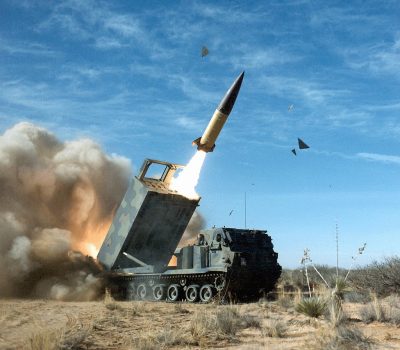
The recent authorization by U.S. President Joe Biden permitting Ukraine to conduct long-range missile strikes against Russian territory represents a pivotal juncture in the ongoing Russo-Ukrainian conflict. This decision has ignited intense criticism, with detractors labeling it a perilous gamble and potentially catastrophic for Ukraine’s long-term stability. The move also underscores a labyrinth of geopolitical calculations, raising the stakes for NATO’s involvement and exposing the fragility of U.S. domestic political dynamics.
Is There a Strategic Underpinning to Biden’s Actions?
One interpretation of President Biden’s directive is that it aims to deepen NATO’s entanglement in the conflict. By endorsing Ukraine’s use of advanced weaponry on Russian soil, the United States could be strategically steering the situation toward a broader confrontation—one that might compel direct NATO intervention. Such escalation might simultaneously deflect attention from pressing domestic challenges in the United States, particularly as the country edges closer to the anticipated presidential inauguration of Donald Trump in January 2025.
Speculation abounds that this decision could be calibrated to undermine Trump’s return to office. The former president’s preference for diplomatic solutions and his outspoken criticism of U.S. involvement in Ukraine stand in stark contrast to the Biden administration’s hawkish approach. An intensification of the conflict, especially one involving NATO, could generate a climate of chaos—introducing logistical and legal obstacles that could complicate Trump’s reentry into the White House.
Russia’s Response: A Display of Strategic Might
In retaliation, Russia has launched its formidable Oreshnik missiles, targeting critical Ukrainian infrastructure and military installations. These precision-guided weapons, lauded for their destructive capability, vividly illustrate Russia’s capacity for overwhelming military force. The psychological and material impact of these strikes reverberates far beyond Ukraine, sending unsettling signals to NATO and European Union member states that have steadfastly supported Kyiv.
This response aligns with the principles of the Karaganov Doctrine, which advocates the application of disproportionate force to disorient adversaries and sow divisions among them. By showcasing its military supremacy, Russia aims to erode NATO’s cohesion, exploit fractures within the alliance, and reaffirm its dominance on the global stage. The Oreshnik strikes serve as a strategic maneuver designed to shake Western resolve and force a recalibration of their commitments to Ukraine.
Ukraine’s Gamble: A Double-Edged Sword
For Ukraine, the decision to execute long-range strikes on Russian targets represents a high-stakes strategy. While it highlights the growing sophistication of Ukraine’s military capabilities—largely enabled by Western aid—it simultaneously exposes the nation to heightened risks of retaliatory aggression. Ukraine’s infrastructure, already battered by the protracted conflict, risks further degradation, with its civilian population enduring immense hardship.
This aggressive approach may also strain relationships with European allies, some of whom are growing increasingly reluctant to sustain prolonged involvement in the conflict. Mounting economic burdens and domestic political pressures are testing the resolve of European governments, and any perceived misstep by Ukraine could jeopardize the fragile coalition of support that currently sustains its war effort.
Broader Geopolitical Implications
The escalation in Ukraine holds far-reaching consequences for global stability. NATO’s response to Russia’s show of force will be closely scrutinized, particularly as the alliance contends with internal divisions and wavering public support for continued military aid. The European Union, already grappling with economic challenges and political discord, risks further destabilization if the conflict spills into neighboring regions.
For the United States, the implications of its interventionist approach are profound. While the Biden administration may perceive its support for Ukraine as both a moral and strategic imperative, it risks entangling the nation in an extended and potentially unmanageable conflict. Domestically, the political ramifications could be substantial, especially if the war intensifies or if Trump’s agenda successfully capitalizes on public dissatisfaction with U.S. foreign policy.
Conclusion: A Step Toward a Precarious Future
The authorization of long-range missile strikes by Ukraine, endorsed by President Biden, has initiated a cascade of events fraught with uncertainty and danger. While the immediate objectives may include intensifying pressure on Russia and reinforcing Western unity, the long-term consequences for Ukraine, NATO, and global stability remain deeply concerning. Furthermore, the decision highlights the interplay of international strategy and domestic political considerations in an increasingly polarized United States.
As the conflict evolves, the international community is confronted with the stark reality that miscalculation or strategic overreach could precipitate a crisis of unprecedented magnitude. Whether the result of deliberate intent or inadvertent error, this decision has inched the world closer to a precipice, with repercussions likely to extend far beyond the borders of Ukraine.
*
Click the share button below to email/forward this article to your friends and colleagues. Follow us on Instagram and Twitter and subscribe to our Telegram Channel. Feel free to repost and share widely Global Research articles.
Don’t Miss Out on Global Research Online e-Books!
Prof. Ruel F. Pepa is a Filipino philosopher based in Madrid, Spain. A retired academic (Associate Professor IV), he taught Philosophy and Social Sciences for more than fifteen years at Trinity University of Asia, an Anglican university in the Philippines. He is a regular contributor to Global Research.
Featured image: An ATACMS missile being launched from an M270 MLRS (Licensed under the Public Domain)
Comment on Global Research Articles on our Facebook page
Become a Member of Global Research
Source link

